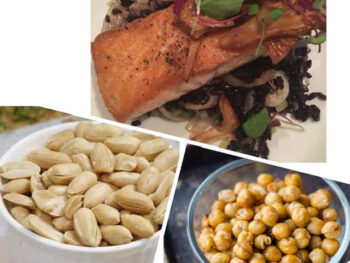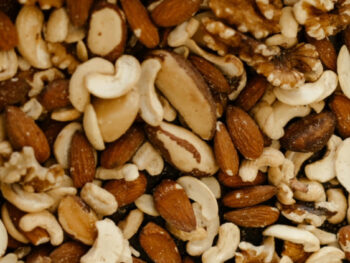![]() Welcome to 2013. 8 Tips to Better Health
Welcome to 2013. 8 Tips to Better Health
Happy New Year!
Below is my latest post for Huffington Post. You can also read it here.
Happy 2013! Do you feel that another year has gone by and you have not met your health and weight loss goals? As a registered dietitian (RD), I counsel so many clients who have told me that they make new resolutions early in the New Year, and by spring, they are bored, frustrated and back to their old patterns. Here are some tips I’ve offered them–and now you–to get out of the all-or-nothing mentality and into the mode of setting lifestyle goals that you can actually stick with to help you lead a healthier and more hassle-free life.
1. Set mini goals. Set goals that are achievable and that work with your life. If you want to lose 50+ pounds, set a mini goal first, say 10 pounds. When you lose those 10 pounds, then you can work on the next 10 pounds.
2. Practice portion control. Watching your portion sizes is the single best way to lose weight and keep it off, while eating all your favorite foods. Bigger portions contain more calories than smaller portions, so scaling back on the size of your food portion will help you trim calories. The best way to get started is first to identify how much you actually eat and when you overeat so that you can make necessary changes. Practicing portion control does NOT mean having to eat tiny portions of all foods. You’ll want to limit food portions that are high in calories—such as salad dressings, chocolate, and soda, for example. But good news—you can eat MORE fresh fruits and veggies without having to worry about how much you’ve just eaten. A salad is a great choice (and don’t worry about how much lettuce and cucumbers you include, as they have few calories) but you’ll want to scale back on the salad dressing which is high in calories. Aim for no more than a shot glass worth of dressing which is 2 tablespoons. I offer an extensive list of tips and tricks in my book The Portion Teller Plan.
3. Keep a food diary for a while. Identifying your problem areas with your food choices is the first step toward making lasting changes. Try keeping a food diary—even for just a month—to identify your problem zones. Try to be mindful of what you eat, how much you eat, when you eat, and if you eat because you are truly hungry, or for some other reason.
4. Make small changes. Aim for making 1-2 small changes at a time. You are most likely to stick to it, if you set a small goal. First, try to avoid liquid calories in the form of soda, for example. After a week or so, when you get that down pat, work on avoiding fried foods for example. And so on. And reward your behavior!
5. Eat a rainbow of colors. Try eating an assortment of fruits and vegetables and vary them by color. Choosing a colorful array of fruits and vegetables is best, as different antioxidants exist in the different color spectrum. PS: By eating a more colorful diet, I’m not referring to different colors of M & M’s!!
6. Indulge in your favorite “cheat” every now and then. By incorporating and legalizing your favorite cheat food once in a while, you will less likely feel the need to have it. Enjoy it and don’t feel guilty.
7. Get moving. Do an activity you really enjoy and can be incorporated into your life. Pick something you enjoy and can sustain. If you didn’t like going to gym last year, this year, set a goal to do a different kind of exercise. And, remember, small lifestyle exercises count. Take the stairs instead of an elevator, walk for a few blocks at lunch, or park your car a few blocks away from your destination.
8. Nix DIETS. Forget fad diets, high protein diets, or “magical” food combining. You are most likely to succeed if you eat foods from all food groups and develop a healthy lifestyle.
And finally, BELIEVE IN YOURSELF. MAKE A COMMITMENT TO SUCCEED AND YOU WILL!!


